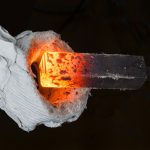 Metal heat treatment is a critical process in the manufacturing industry, playing a pivotal role in enhancing the mechanical properties of metals. However, there are several misconceptions surrounding this crucial technique that can mislead both professionals and enthusiasts alike. In this blog post, we aim to expose and clarify some of the prevalent misconceptions surrounding metal heat treatment, shedding light on the real effects on metal properties, timeframes involved, and the actual impact on cost and product quality.
Metal heat treatment is a critical process in the manufacturing industry, playing a pivotal role in enhancing the mechanical properties of metals. However, there are several misconceptions surrounding this crucial technique that can mislead both professionals and enthusiasts alike. In this blog post, we aim to expose and clarify some of the prevalent misconceptions surrounding metal heat treatment, shedding light on the real effects on metal properties, timeframes involved, and the actual impact on cost and product quality.
Misconception 1: Heat Treatment is Only for Hardening Metal
One of the most common misconceptions about metal heat treatment is that its sole purpose is to harden metal. While it is true that heat treatment can increase the hardness of metals, it is by no means the only outcome. Heat treatment processes, such as annealing and tempering, are equally essential for achieving desired properties like improved ductility, toughness, and machinability. Each treatment has a specific purpose, and a one-size-fits-all approach can lead to suboptimal results.
Misconception 2: Heat Treatment Always Degrades Metal Properties
Some believe that subjecting metal to heat treatment always results in a degradation of its properties. This misconception arises from a lack of understanding of the intricacies involved in the heat treatment process. In reality, when performed correctly, heat treatment can enhance the overall performance of metals. It is crucial to carefully control factors such as temperature, time, and cooling rates to achieve the desired combination of mechanical properties without compromising the integrity of the metal.
Misconception 3: Faster Heat Treatment Equals Better Results
Another prevalent misconception is that faster heat treatment leads to superior results. This belief often stems from the desire to expedite production processes. However, the speed of heat treatment is not synonymous with its effectiveness. Rushing the process can result in uneven heating or cooling, leading to undesirable outcomes such as distortion, cracking, or insufficient transformation of the metal’s microstructure. Achieving optimal results requires a balanced and controlled approach, considering the specific requirements of the metal being treated.
Misconception 4: Heat Treatment Is Expensive and Increases Production Costs
While it’s true that heat treatment involves energy consumption and specialized equipment, considering it as an unnecessary expense is a misconception. In reality, the cost-effectiveness of heat treatment lies in the long-term benefits it provides to the metal’s performance and durability. Properly treated metals exhibit improved resistance to wear, corrosion, and fatigue, leading to longer service life and reduced maintenance costs. It’s essential to view heat treatment as an investment rather than a mere expense in the production process.
Misconception 5: All Metals React the Same Way to Heat Treatment
Assuming that all metals react in the same way to heat treatment is a common misconception that overlooks the diversity of materials in the metallurgical world. Different metals and alloys have unique compositions, and their response to heat treatment varies significantly. Factors such as carbon content, alloying elements, and initial microstructure play a crucial role in determining the most suitable heat treatment process for a particular metal. Understanding these material-specific nuances is essential for achieving the desired outcomes.
Misconception 6: Heat Treatment Is a One-Time Process
Some may believe that once a metal undergoes heat treatment, it remains in its enhanced state indefinitely. However, the effects of heat treatment are not permanent, and they can be influenced by subsequent processes, such as machining or welding. It’s essential to consider the entire manufacturing workflow and plan subsequent steps accordingly to maintain the integrity of the treated metal. Additionally, periodic re-evaluation of the metal’s properties may be necessary to ensure that it continues to meet the required standards over time.
Misconception 7: Heat Treatment Is Only for Large-scale Production
Contrary to the belief that heat treatment is exclusively for large-scale production, it is equally beneficial for small-scale and custom manufacturing. Even individual components or prototypes can benefit from tailored heat treatment processes to achieve specific material properties. With advancements in technology and the availability of specialized heat treatment services, manufacturers of all sizes can leverage this technique to enhance the quality and performance of their products.
Summary
Understanding the truth behind these common misconceptions is crucial for anyone involved in metalworking or manufacturing. Metal heat treatment is a versatile and powerful tool that, when used correctly, can significantly enhance the mechanical properties of metals. By dispelling these misconceptions, we pave the way for informed decision-making, ensuring that heat treatment is applied effectively to achieve the desired outcomes in terms of material performance, production costs, and overall product quality.
